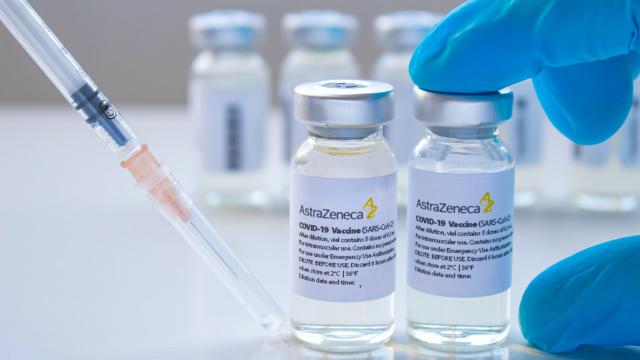In addition to the Pfizer, Moderna, and Johnson & Johnson vaccines currently authorised for use in the U.S., several other vaccines are in use in other countries. One of those, the Oxford/AstraZeneca vaccine, isn’t authorised in the U.S. yet and has been surrounded by controversy. Here’s a rundown of what we know.
How is this vaccine different from the others we have?
The Oxford/AstraZeneca vaccine uses an adenovirus (related to one of the viruses that causes the common cold) to carry a piece of DNA that encodes instructions for the coronavirus’s spike protein. Our cells use that DNA to make the protein, and then our immune system recognises the protein as an invader and makes antibodies that can recognise and fight the virus. This is a similar mechanism as the Johnson & Johnson vaccine. The Pfizer and Moderna vaccines, by contrast, use mRNA in a lipid bubble rather than DNA in a modified virus.
The AstraZeneca vaccine is given in two doses, and it can be stored at refrigerator temperatures for six months. It’s also reportedly cheaper than the other vaccines, about $US4 ($5) per dose rather than $US10 ($13) for Johnson & Johnson or $US20 ($26) or more for the mRNA vaccines.
Where is this vaccine already being used?
According to the New York Times vaccine tracker, it’s authorised for emergency use in 46 countries plus the European Union, and fully approved in Brazil. The UK, Australia, India, Canada, and Mexico are among the countries where it is currently in use.
Why isn’t it approved in the U.S.?
The first large-scale trials of the vaccine, completed in December 2020, were the basis for several countries to authorise the vaccine and begin using it. There were concerns at the time that the trials were run differently in different countries, with different amounts of time between doses, and some participants got an incorrect dose (although they turned out to be well protected from COVID despite the error).
The company did a more recent trial that included participants in the U.S., and announced results from that trial this week. They plan to apply to the FDA for emergency use authorisation, so this vaccine could end up being used in the U.S. as well.
Didn’t other countries stop using it?
Earlier this month, several countries stopped using the AstraZeneca vaccine over reports that some people who received the vaccine developed blood clots. (Blood clots can have a variety of causes, and can also occur as a result of COVID.) An analysis showed, however, that the occurrence of blood clots in people who got the vaccine was not more frequent than in any similarly large group of people. In other words, there was no reason to believe the vaccine caused the clots. Vaccination programs resumed.
Is it as good as the other vaccines?
Like the other vaccines currently authorised, it seems to protect 100% against life-threatening cases of COVID, with lower efficacy against mild and moderate cases of the disease. The full data has not yet been released, but the big-picture numbers are comparable to the other vaccines we have.
Somewhat concerning, the numbers used in the AstraZeneca press release were outdated by the time they were published, and it appears that the company chose to use a 79% effectiveness figure from an earlier analysis, rather than the 76% that was calculated with the most recent data.
Vaccine trials have an independent data safety monitoring board, which sounded the alarm on the discrepancy, but this change in numbers doesn’t mean the vaccine is necessarily less effective, it just seemed to erode experts’ trust in the company running the trials. We will learn more in a few weeks when the U.S. FDA is expected to release a briefing document with its summary and interpretation of the U.S. trial’s data.

Leave a Reply
You must be logged in to post a comment.